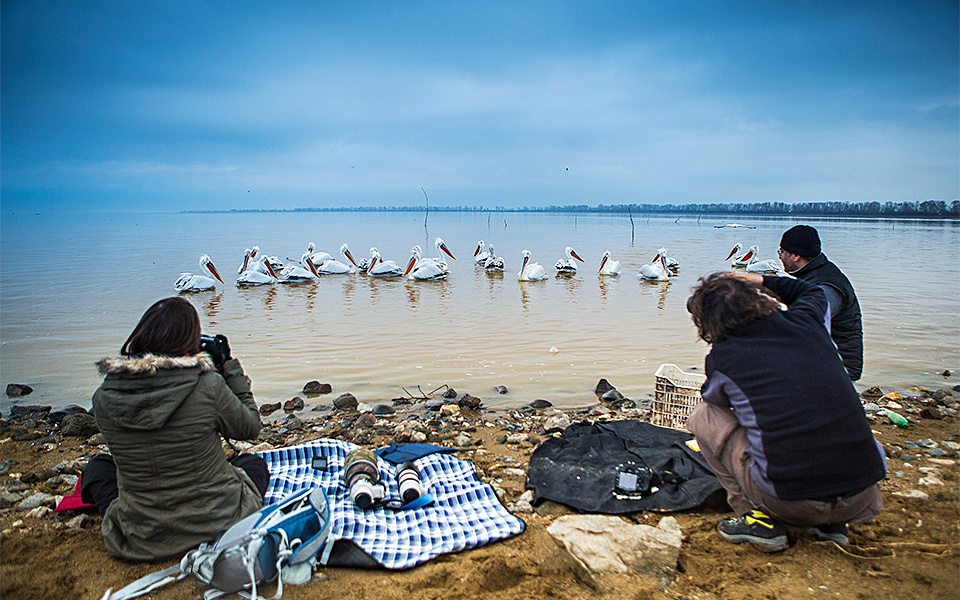“Flamingos, bears, wildcats and the rare birds of Greece could provide an important boost for tourism in the country during the offseason,” says George Blonksy. Following 20 years working as a photojournalist with top international outlets such as National Geographic, the BBC and the New York Times, in 2010 Blonsky began organizing photography trips for foreign tourists, guiding them into Greece’s wild landscapes.
Since then wildlife and adventure lovers from around Europe have followed him on photographic odysseys in pursuit of wildcats, bears and rare birds, seeking them out in their natural habitats.
What is unique about Greece’s wildlife?
There are places where you can photograph rare birds from up close, such as sea eagles, red-crested pochards, yellowhammers, cormorants, herons, Dalmatian pelicans, cranes, greater spotted eagles and white-fronted geese. In Britain it is only on a few remote parts of the Scottish coast where you can still see and approach wild birds.
Greek nature still has a virgin beauty. You can, for example get up close to eagles. In the Dadia forest in the region of Evros, I have found a spot where vultures catch thermals to climb and you can see them standing right in front of you, looking you in the eye.
Sometimes you need to wait in a hide but that’s part of the experience. In the winter around Kerkini lake we wake up at around 4.00am and set up our tent before first light to wait for the dawn. As soon as the sun starts to come up on the on the opposite side of the lake, you see the silhouettes of thousands of flamingos as they begin their impressive dance. The Dalmatian pelicans which come to the wetland to pick up a fish or two surround us as we take out the boat.
But the wild beauty is not restricted to the birds – some people are crazy about felines. We often travel around Florina photographing wildcats. Gradually we are including other animals: otters, polecats, wild boars and bears. Right now we are preparing our first photography trip focusing on bears in Prespes.

© George Blonsky
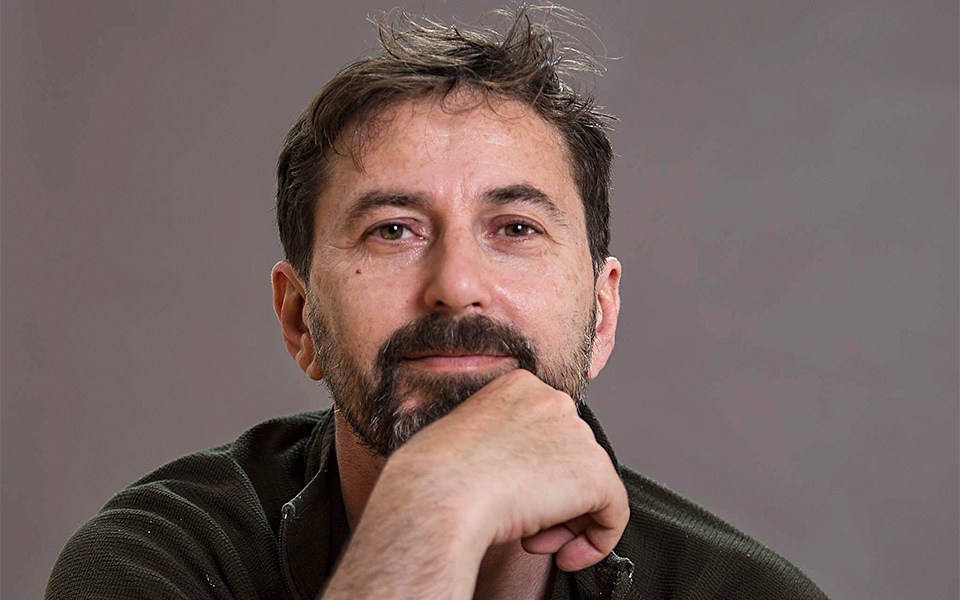
What led you to begin these photography trips?
In 2010 and while Greece was still in a state of shock after the outbreak of the crisis, I was asked by a photographers’s association in London, where I am based, to give them a seminar on the landscapes in northern Greece. In the UK photography trips had already become fashionable, but here this category of tourism was almost unknown. There was a great response, foreign tourists were very excited by the wild birds of Kerkini and I thought that this experience needed to be repeated. So I traveled to the regions of Macedonia and Thrace, I read about the birds and became friends with the locals. Focusing on photography, I set up GEO Pictorial. From the outset there was great interest.
What sort of people choose this sort of travel experience?
Amateur photographers who are well-off on medium-to-high incomes. Usually they are retired French, Belgian, Dutch, English or Norwegian people who can invest in their hobby. Many have health issues, and that is why they come with me and not go independently themselves. They want everything to be easy and organized. One British woman who regularly takes part cannot walk unassisted for more than 200 meters. I take her to the site, carry her equipment and set up her camera and tripod so she has the subject in front of her.
Each group is made up of four members and the participants arrange their own tickets. As soon as they land in Thessaloniki there is a well-organized 5-day trip waiting for them.
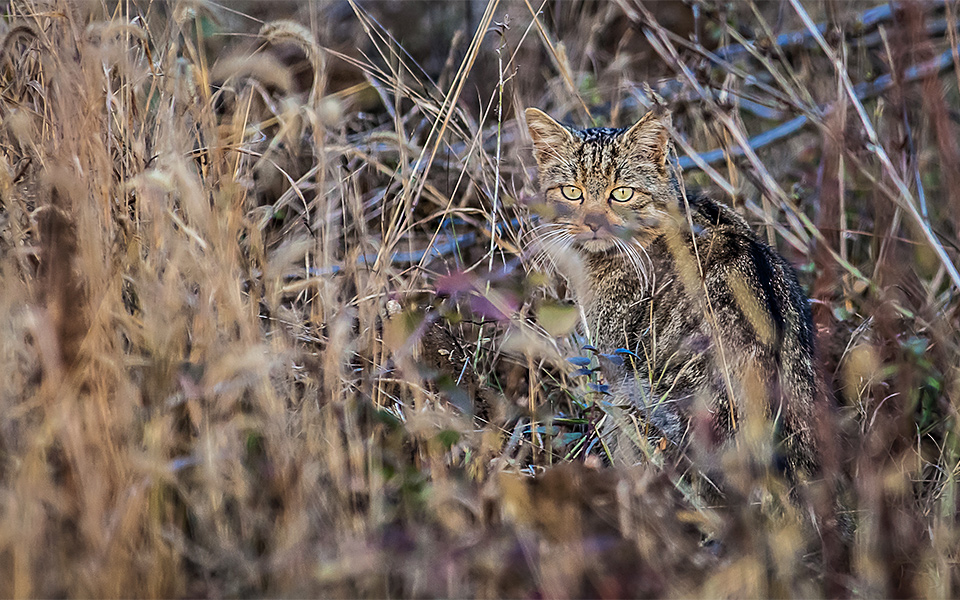
© George Blonsky
Where do you go?
It depends on what each workshop is about. The participants choose beforehand what they are interested in. For landscapes we go to Meteora and eastern Zagoria, whereas for wildlife we go to areas with rich birdlife such as Prespes, Evros or Kerkini. We travel around the delta of the Evros River with 4x4s and head out onto the water in canoes and boats. Soon we will be including Crete in our destinations – the first land migratory birds find north of Africa, and Lesvos and Rodopi.
Are the trips also educational?
Yes, because participants learn many different photography techniques, they work with depth of field, shutter speed, focusing and composition. They also get accustomed to handling the big, demanding telephoto lenses over 300mm. My goal is to get away from the classic images of birds, to think differently and create portraits of them in their natural environments. After a full day we go back to the hotel where we enjoy traditional cooking – for example in Kerkini the speciality is Greek buffalo. We then transfer the photos of the day.
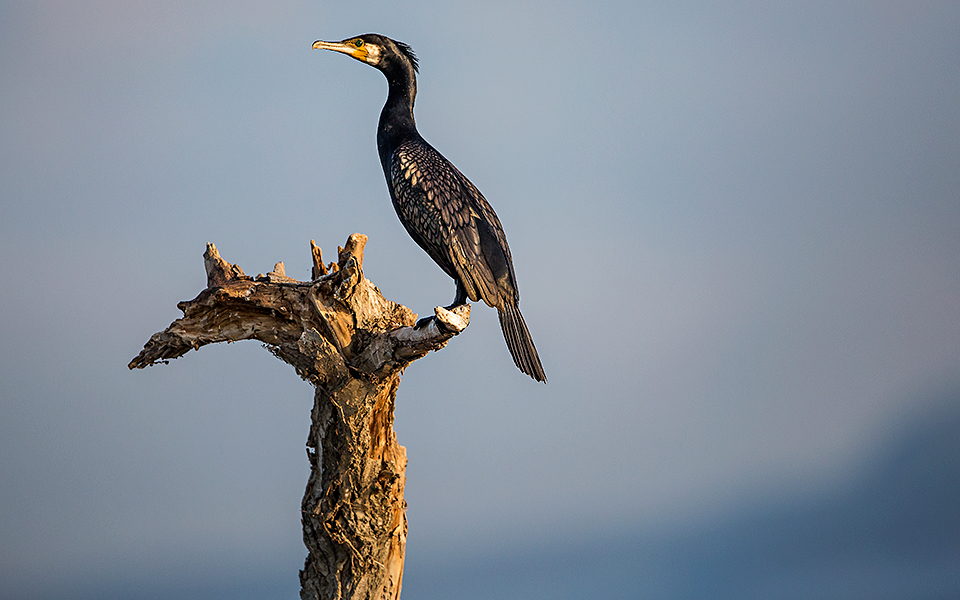
© George Blonsky
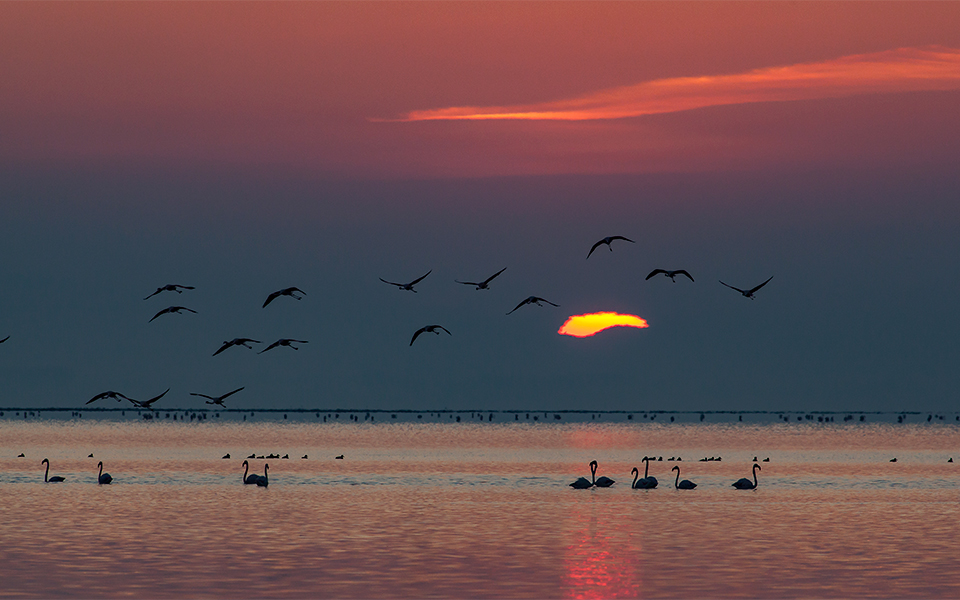
What seasons are the most popular for wildlife photographers?
The birds and the landscapes change constantly giving one an incentive to keep coming back. At the beginning of December it is full of flamingos with a backdrop of snowy mountains, whereas in January and February the pelicans’ pouches turn red as it is their breeding season and that makes for wonderful portraits. In the spring you pursue the ‘family photos’ of cranes in their nests on pylons. The landscape is in full bloom, the lake is full of water lilies and we row out into the center, into the forest that grows out in the water. Suddenly you are in a jungle with the 60,000 birds that are nesting there. Cries and smells intermingle as we float under the trees, on which the cormorants are hanging like grapes.
Could such photographic expeditions help the tourism industry?
Many hotels have already realized that these activities are beneficial to the area and bring in revenue. The wildlife, the flamingos, the bears, the wildcats and the rare birds of Greece could provide a significant boost to the tourism industry during the offseason, provided we protect them. People who come from abroad are impressed by the country’s unknown beauties. They are also amazed by the dramatic skies in the winter, they feel the joy of discovery at a raging river in the spring, they look to learn the technique that makes the frothing water look like milk.
In Kipoi in Zagoria, they are impressed by the stone bridges. In Meteora we do two landscape photography sessions per day, one at dawn and one at sunset. In the winter there is a moment that I have called, ‘The God Moment.’ During the last trip, someone asked me, ‘When is this God Moment finally supposed to happen?’ Right at that moment the sun came out from behind the clouds with these incredible rays falling directly on the Rousanou Monastery. ‘Turn around and look,’ I told him.
If you travel with photography as your aim, these are the moments you look for, you prefer the winter; you are not as interested in the blue sky of the summer.

